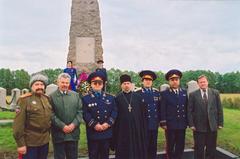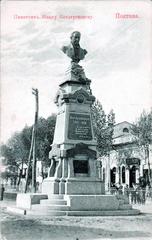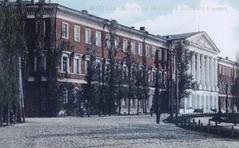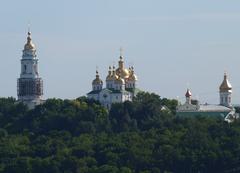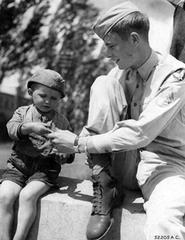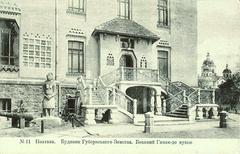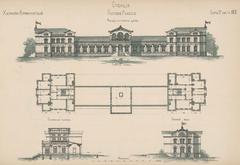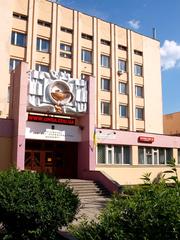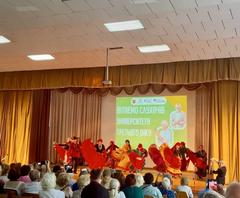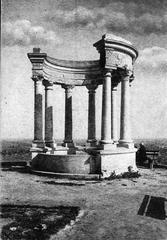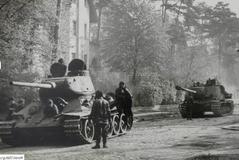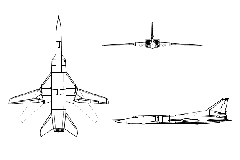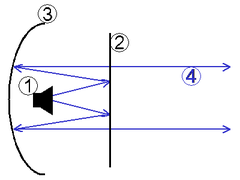
Shvedska Mohyla Poltava: Visiting Hours, Tickets, and Historical Sites Guide
Date: 04/07/2025
Introduction: History and Significance of Shvedska Mohyla
Set on the legendary battlefield of Poltava, Shvedska Mohyla (Swedish Mound) stands as a moving memorial dedicated to the Swedish soldiers who fell during the pivotal Battle of Poltava in 1709. This battle was a watershed moment in European history, signaling the decline of Swedish military dominance and the emergence of Russia as a major power under Tsar Peter the Great. Today, Shvedska Mohyla is more than just a memorial mound—it is an integral part of the National Historical-Cultural Reserve “The Field of the Battle of Poltava,” which covers over 700 hectares and includes a rich array of monuments, a museum complex, and commemorative spaces.
Visitors to Shvedska Mohyla experience a compelling blend of history, archaeology, and remembrance. The site features reconstructed fortifications, annual memorial services, and guided tours in multiple languages. Accessibility and visitor comfort are thoughtfully addressed, with wheelchair-friendly paths, a museum café, and a gift shop. The open grounds are free to visit, while the museum requires a modest admission fee. For current visiting hours, ticketing, and event updates, consult the Shvedska Mohyla Museum Complex Facebook page or the official websites.
Visiting Shvedska Mohyla offers a window into a critical chapter of European history and a unique opportunity to engage with a site dedicated to education, memory, and cultural dialogue (History Today; Discover Ukraine; Visit Poltava).
Table of Contents
- Discover Shvedska Mohyla: Why Visit This Poltava Historical Site
- Origins and Historical Context
- The Battle of Poltava and Its Aftermath
- Cultural and Memorial Significance
- Archaeological and Historical Research
- Visitor Information: Hours, Tickets, and Accessibility
- Architectural and Landscape Features
- Modern Memory and Commemoration
- Visiting the Museum Complex: Practical Guide
- Monuments and Memorials at Shvedska Mohyla
- Cultural Impact and Community Role
- Practical Visitor Information: Directions, Hours, Tickets
- Frequently Asked Questions (FAQ)
- Summary and Recommendations
- References and Further Reading
Discover Shvedska Mohyla: Why Visit This Poltava Historical Site
Shvedska Mohyla, or “Swedish Grave,” is a must-see for anyone interested in history or cultural heritage. The mound and its surroundings not only commemorate the fallen Swedish soldiers of the 1709 battle but also provide an immersive educational and memorial experience that appeals to all kinds of visitors.
Origins and Historical Context
Shvedska Mohyla marks the mass grave of Swedish soldiers who died in the Battle of Poltava, fought on June 27 (July 8, New Style), 1709, during the Great Northern War. This decisive battle ended Swedish supremacy in Northern Europe and ushered in Russian ascendancy (History Today; Wikipedia). The name “Shvedska Mohyla” directly translates as “Swedish Mound,” emphasizing its role as a solemn place of collective remembrance.
The Battle of Poltava and Its Aftermath
The Swedish army, numbering around 17,000, faced off against 42,000 Russian troops. The defeat was catastrophic for Sweden, with thousands killed, wounded, or captured, and Charles XII forced to flee. The battle’s outcome shifted the European balance of power, and Shvedska Mohyla stands today as a testament to those lost and the far-reaching consequences that followed (Earth Site).
Cultural and Memorial Significance
The mound is a centerpiece of the National Historical-Cultural Reserve “The Field of the Battle of Poltava,” spanning 770 hectares and preserving 18th-century landscapes and fortifications. It serves as a place of reconciliation and remembrance, with monuments honoring Swedish, Russian, and Ukrainian participants. Annual commemorations foster dialogue and highlight the site’s international significance (Discover Ukraine).
Archaeological and Historical Research
Excavations have unearthed weapon fragments, personal belongings, and fortification remains. The Museum of the History of the Battle of Poltava displays over 8,000 artifacts, offering visitors a tangible connection to the events of 1709. The site’s archaeological finds deepen our understanding of the battle and its participants (Discover Ukraine; Earth Site).
Visitor Information: Hours, Tickets, and Accessibility
- Grounds Access: The outdoor memorial grounds are open 24/7 and free of charge.
- Museum Hours: Tuesday–Sunday, 09:00–17:00; closed Mondays.
- Museum Tickets: 25–50 UAH for adults, with discounts for students and seniors (Prostobank).
- Guided Tours: Available in English, Ukrainian, and Russian; advance booking is recommended for English-language tours.
- Accessibility: Main paths are wheelchair-accessible; some uneven terrain exists, particularly on the mound and in older structures.
- Location: vul. Shvedska Mohyla, 32, Poltava, about 5–7 km from the city center. Reachable by taxi, local bus, or car.
Architectural and Landscape Features
Shvedska Mohyla is a gently rising grassy mound, marked by commemorative plaques and, during ceremonies, national flags. It provides panoramic views of the surrounding battlefield, giving visitors a sense of the landscape’s strategic role in the 1709 conflict (Discover Ukraine; Facts.net).
Modern Memory and Commemoration
Annual memorial services and reenactments attract descendants, historians, and tourists. The mound and its monuments have become powerful symbols of reconciliation and reflection, supported by local and international preservation efforts (Tourist Places Guide).
Visiting the Museum Complex: Practical Guide
Location and Getting There
- Address: vul. Shvedska Mohyla, 32, Poltava, Ukraine
- By Public Transport: Bus 4 from the Kyivsky shopping center; nearest train stop is Shvedska Mohyla station.
- By Car: Parking available.
- Taxi: Fares from city center are modest.
Facilities
- Restrooms, café, and gift shop available at the museum.
- Guided tours in multiple languages.
- Maps and interpretive signage throughout the site.
Monuments and Memorials at Shvedska Mohyla
- Monument of Glory: Iconic neoclassical column with gilded eagle, erected in 1909.
- Rotunda Honoring the Fallen: Modern memorial with mosaics of Swedish, Russian, and Ukrainian flags.
- Common Graves and Bed of Honor: Mass burial sites for soldiers.
- Monument to Peter the Great: Honors the Russian Tsar’s leadership.
- Sampsonievskaya Church: Historical church marking the spot of Tsar Peter’s thanksgiving.
- Swedish Memorials: Monuments from both Russian and Swedish sides honoring Swedish soldiers.
- Other Monuments: Memorials to Ukrainian Cossacks, Colonel Kelin, and more (audiala.com).
Cultural Impact and Community Role
Shvedska Mohyla is designated a national cultural heritage site and is part of an internationally recognized museum complex. It hosts educational programs, guided tours, and community events, furthering its role as a living site of remembrance and learning.
Practical Visitor Information
- Opening Hours: Outdoor memorials open 24/7; Museum open Tuesday–Sunday, 09:00–17:00.
- Tickets: Free for outdoor grounds; museum admission 25–50 UAH.
- Best Time to Visit: Late spring/early autumn for mild weather and commemorative events.
- Accessibility: Wheelchair-accessible paths; some uneven terrain.
- Tours: Book in advance for English-language tours.
- Photography: Allowed outdoors; restrictions may apply indoors.
- Dress Code: Modest attire recommended, especially for church visits.
- Local Cuisine: Try traditional dishes in nearby restaurants.
Frequently Asked Questions (FAQ)
Q: What are the Shvedska Mohyla visiting hours?
A: Outdoor grounds are open 24/7; the museum is open Tuesday–Sunday, 09:00–17:00, closed Mondays.
Q: Is there an entrance fee?
A: Grounds are free; museum ticket costs 25–50 UAH for adults, with discounts.
Q: Are guided tours available?
A: Yes, in Ukrainian, Russian, and English; advance booking recommended for English tours.
Q: Is the site accessible for wheelchairs?
A: Main paths are accessible; some areas may be more challenging—contact the museum for details.
Q: What other attractions are nearby?
A: Poltava Battle Museum, Sampsonievskaya Church, Holy Cross Monastery, and reconstructed redoubts.
Summary and Recommendations
Shvedska Mohyla is a deeply meaningful site that honors the memory of those who fought at the Battle of Poltava and serves as a space for education, reflection, and cultural exchange. With a well-preserved reserve, an informative museum, and accessible facilities, it offers a comprehensive experience for all visitors. Plan your trip during spring or autumn for the best weather, and consider booking a guided tour for deeper insights. For the latest updates, visit the Shvedska Mohyla Museum Complex Facebook page and download the Audiala app for interactive content.
References and Further Reading
- History Today: The Battle of Poltava and its impact
- Discover Ukraine: Poltava Historical Sites
- Visit Poltava: Shvedska Mohyla Museum Complex
- Tourist Places Guide: Poltava Tourist Attractions
- audiala.com: Glory Monument in Poltava

